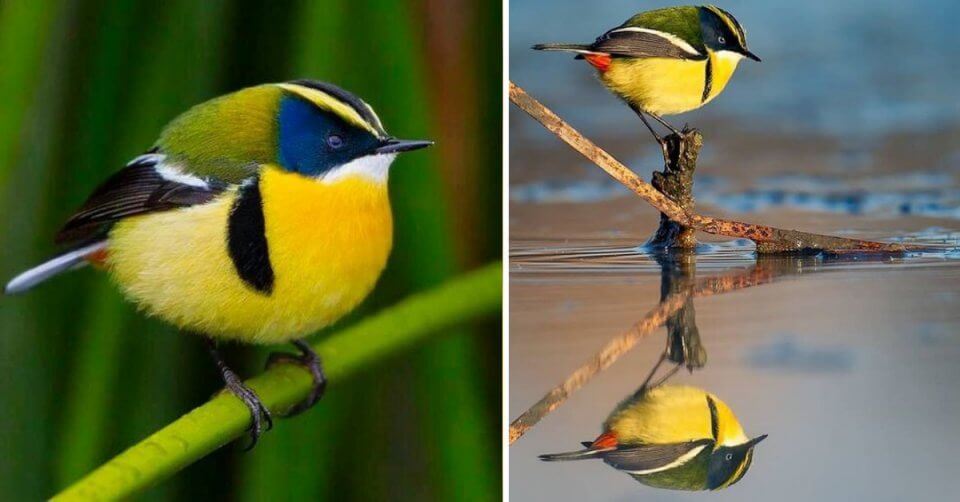BOLDLY PATTERNED, COLORFUL PLUMAGE IS NOT UNIQUE TO ANY ONE PARTICULAR BIRD SPECIES, NOR IS UNIQUE TO ONE PARTICULAR SIZE OF BIRD.
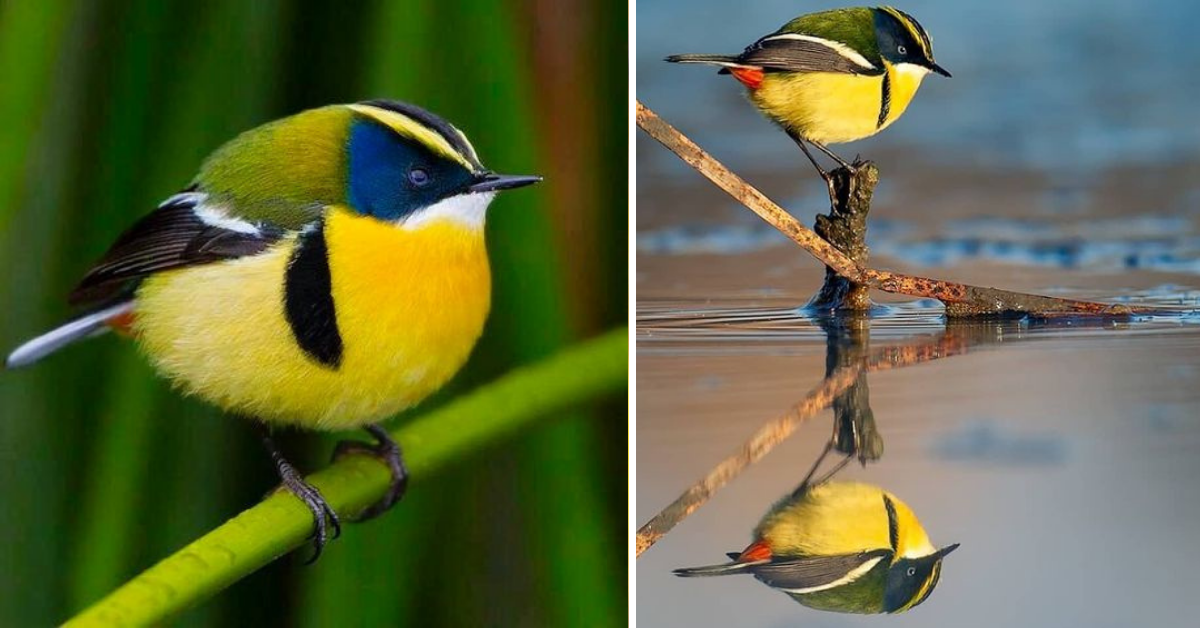
This truth is proved by a tiny three-inch bird that somehow manages to squeeze seven hues onto its tiny body, producing a spellbinding rainbow of color.
MEET THE MANY-COLORED RUSH TYRANT
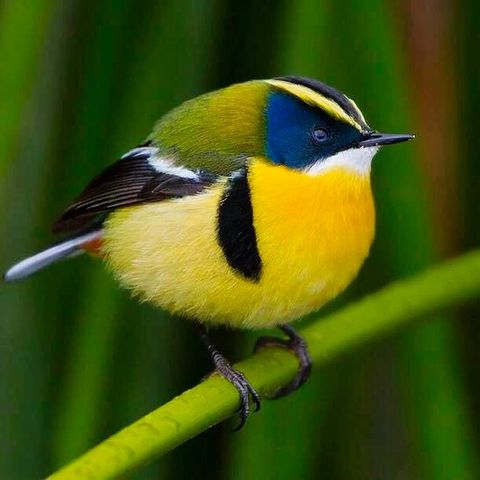
Photo Courtesy of Picuki/@americanbirdconservancy
The many-colored rush tyrant is only 3 – 4.5 in (10-11.5cm) in length. As the name suggests, this one very colorful bird. So much so it has 7 different hues splashed onto its tiny body. The back and rump are green and the belly is yellow with a white throat. The face is blue to grey, with a yellow stripe on the top of his head. The wings and tail black with a white wing bar and white outer tail-feathers. To top it all off there is a splash of red under the tail.
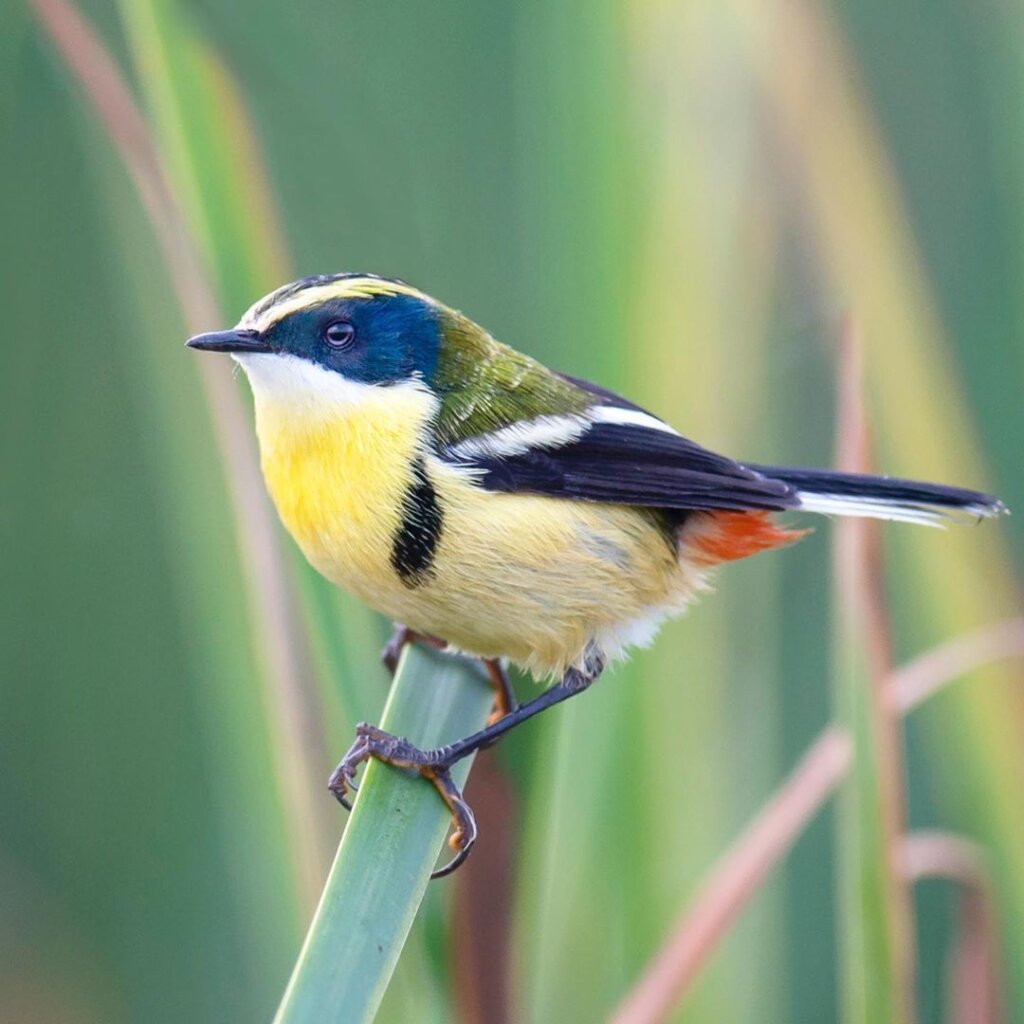
Photo Courtesy of Instagram/@on_the_fly_bird_photography
As with many bird species, females and juveniles are not quite as brightly colored as the male.

Photo Courtesy of Picuki/@luciano.s.massa
These tiny birds are found in South America, where they inhabit marshland and reedbeds around lakes and rivers. Its most widespread from south-east Brazil to southern Argentina and central Chile. Other populations are found in the Andes of south-east Peru and west Bolivia, with another sub-species restricted to the Antofagasta Region in northern Chile.
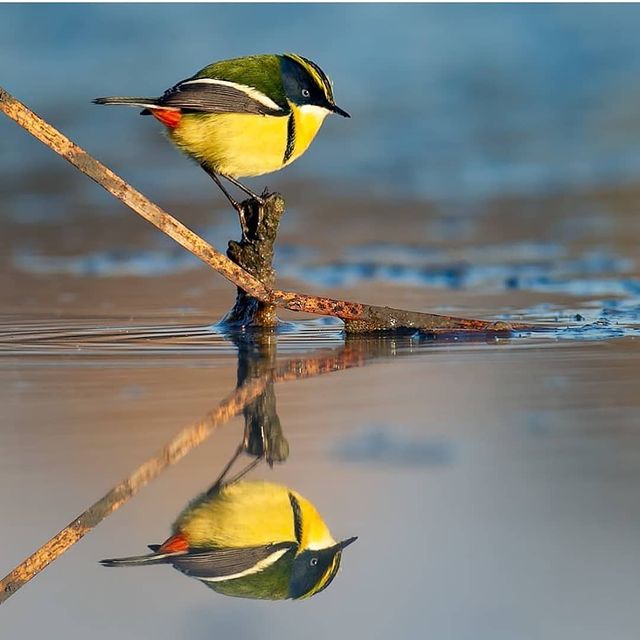
Photo Courtesy of Picuki/@birds.nature
As it lives in marshy areas, the Many-colored rush tyrant spends its time foraging for food. Hopping onto floating vegetation in pursuit of prey, even catching flying insects on the wing.

Photo Courtesy of Picuki/@voicesforpositivechange
The female builds a cone-shaped nest made out of wet vegetation, this is fastened to the side of a single reed stalk. Over time the nest dries and helps provide stability in windy weather. She then lays 2 – 3 eggs and provides most of the care to the chicks until they are fully-fledged, though the male will also help feed them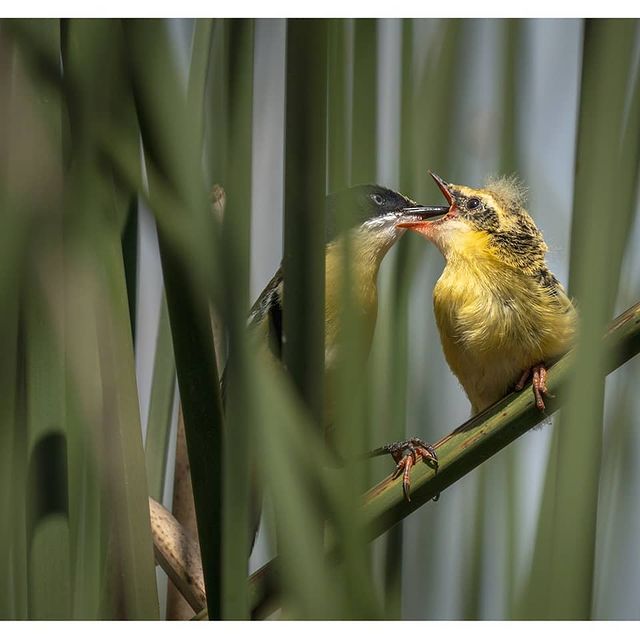
Photo Courtesy of Picuki/@luciano.s.massa
Although widespread throughout its range, this species does face threats due to habitat loss and water pollution.

Photo Courtesy of Picuki/@birds.nature
Conservation efforts around Peru’s Lake Junín have benefited the Many-colored rush tyrant amongst other birds in the area.
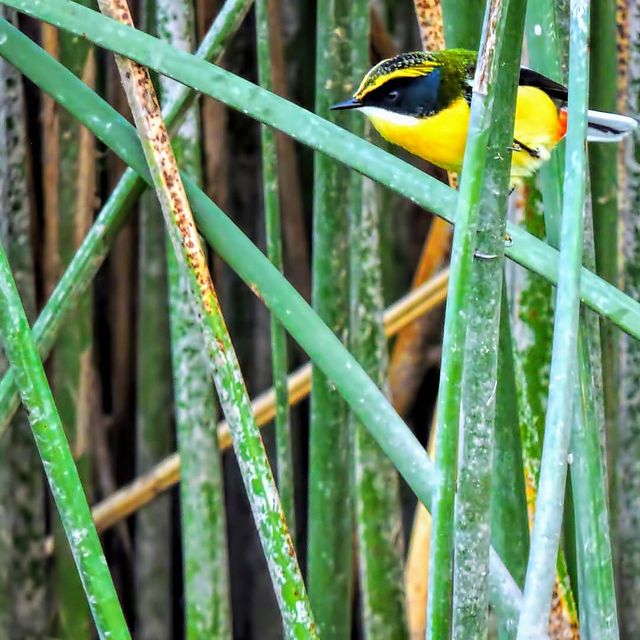
Photo Courtesy of Picuki/@ gabriel.orso
TO HEAR THE MANY-COLORED RUSH TYRANT’S SONG CLICK PLAY BELOW:
Source: Onebigbirdcage

